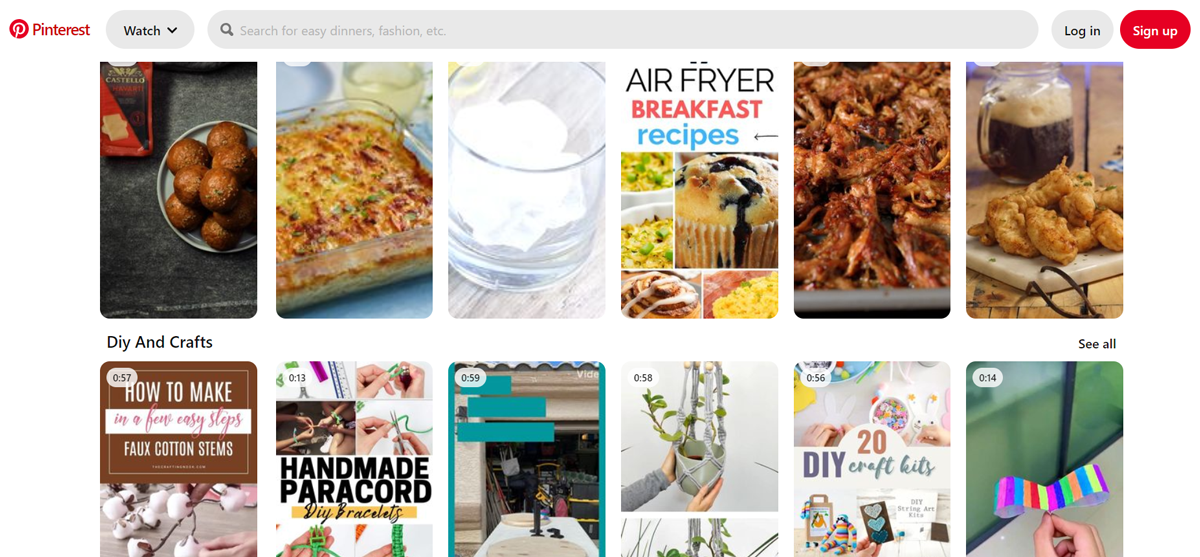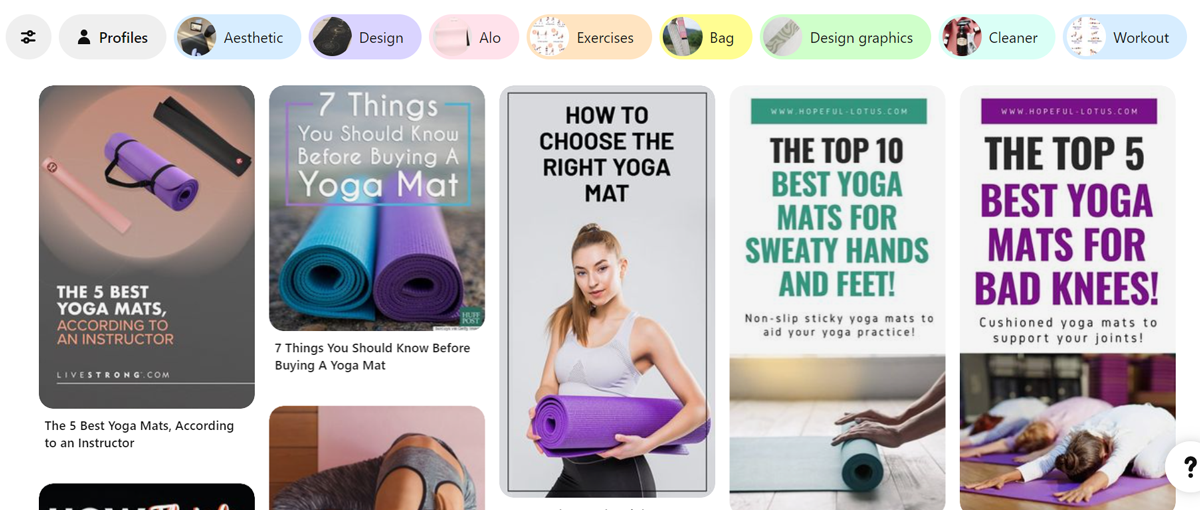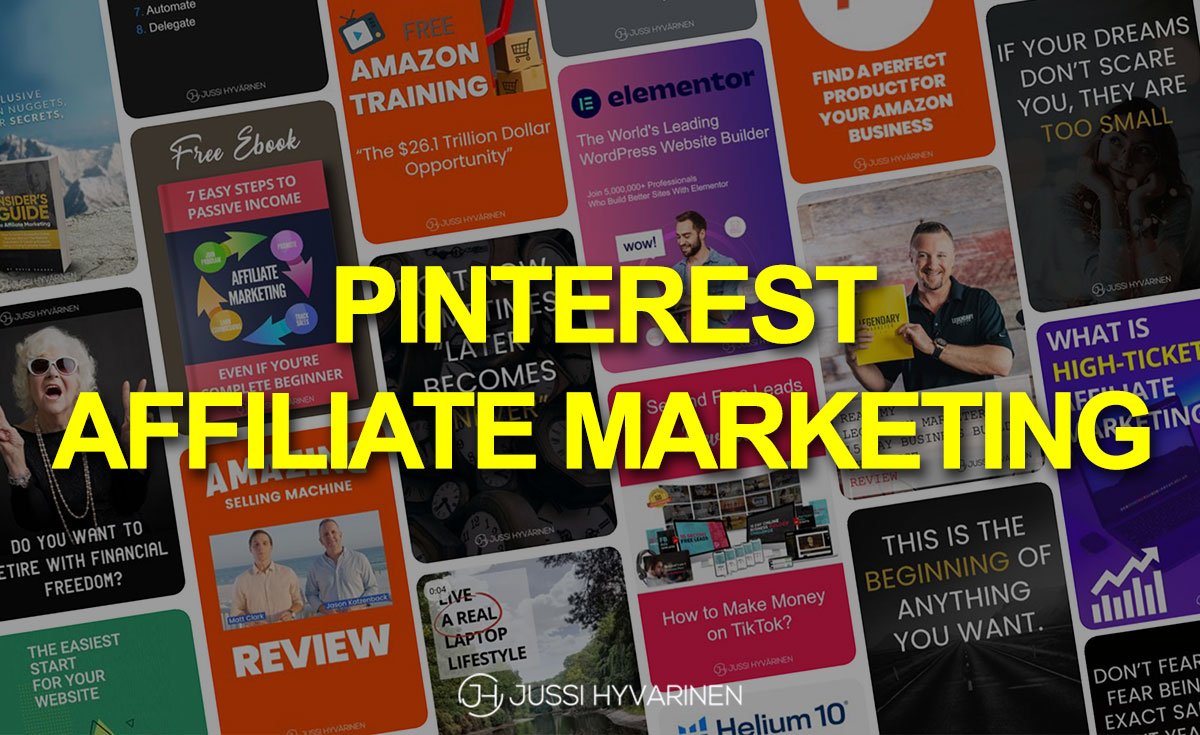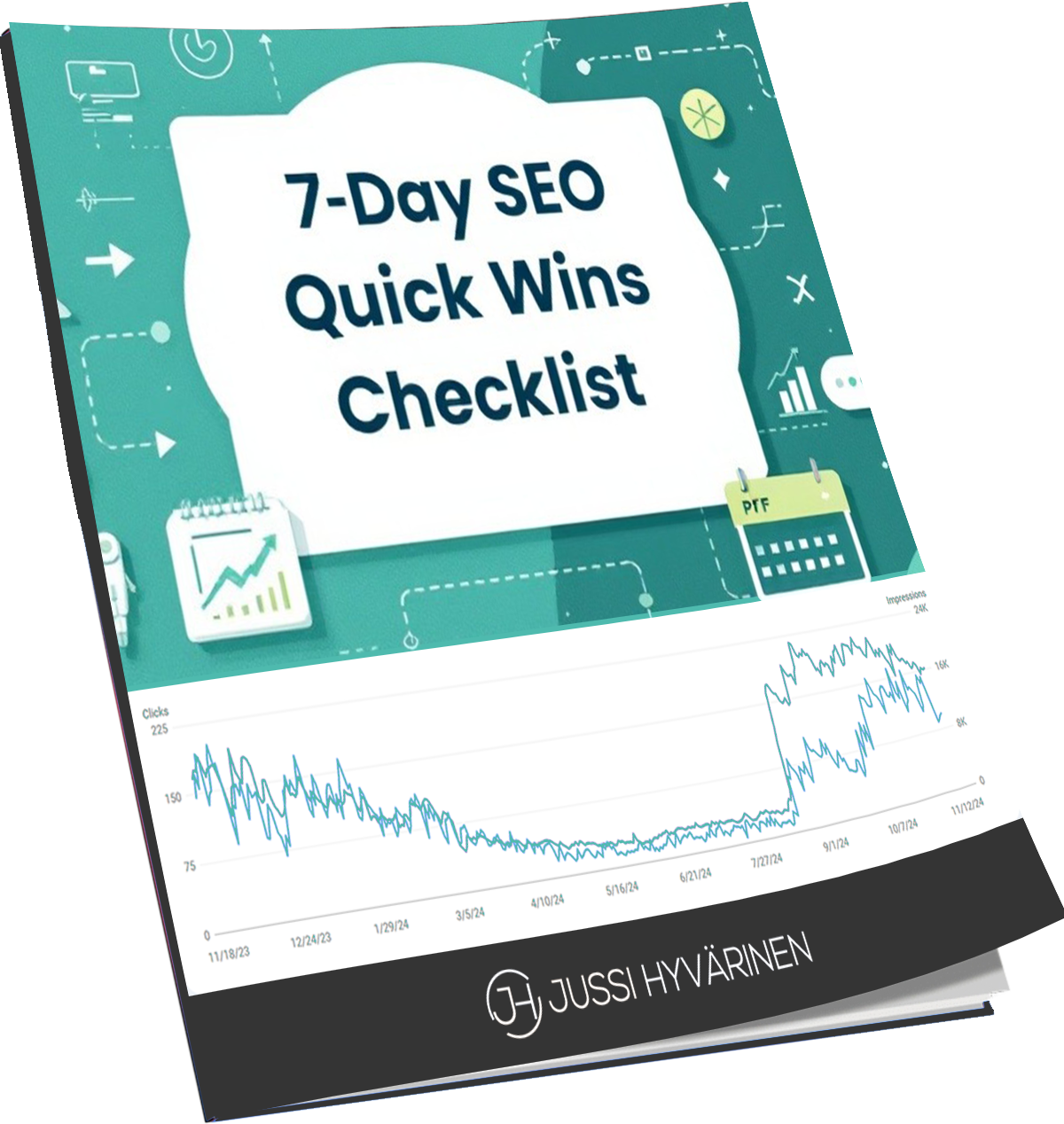Pinterest presents a major opportunity for affiliate marketers in 2025, not the least for bloggers looking to diversify traffic sources after being impacted by Google's Helpful Content Update.
As many sites saw drops in search visibility, bloggers are exploring alternative channels like Pinterest affiliate marketing to keep driving audience growth and monetization. With 500 million highly engaged monthly users, Pinterest offers an immense platform to tap into as an affiliate.
In this complete guide, I'll walk through everything you need to know to get started with Pinterest affiliate marketing, optimize your presence, and maximize your earnings.
What is Pinterest Affiliate Marketing?
Pinterest affiliate marketing refers to the process of promoting affiliate products on Pinterest and earning a commission when users purchase through your affiliate links.
As a Pinterest affiliate marketer, you can share affiliate links in your Pins that lead users to online stores. If someone clicks your affiliate link and completes a qualifying purchase, you earn a percentage of the sale as a commission.
Some key things to know about Pinterest affiliate marketing:
- You don't need a website or blog to do it. You can share affiliate links directly on Pinterest without an external site. However, having a website allows you to build authority and trust.
- Multiple affiliate models are possible. You can promote affiliate products related to your own niche store or curate products from various merchants.
- Commissions vary. Rates range from 1-10%+ depending on the retailer. Popular programs like Amazon Associates pay small percentages, around 1-5%.
- Visuals are crucial. Images and videos perform the best. Leverage Pinterest's visual nature.
- Patience is key. It takes time to build an audience and see results. Consistency pays off.
Why Choose Pinterest for Affiliate Marketing?
With its highly engaged user base, Pinterest offers major advantages for affiliate marketers:
1. Large Audience of Online Shoppers
Pinterest has almost 500 million monthly active users searching for products, ideas, and inspiration. 75% use Pinterest to shop for products, making it a prime platform to connect with buyers.
2. High-Intent Users
Pinterest users have high intent to purchase. In fact, 83% have purchased a product they discovered on Pinterest. They come to the platform ready to shop.
3. Visual Platform
As a visual platform, Pinterest naturally lends itself well to promoting visually appealing products through affiliate links. Images and videos tend to perform better than text.
4. Products Go Viral
Pins can go viral on Pinterest quickly. If your product images catch on, you can rapidly scale an affiliate campaign.
5. Long-Lasting Content
Unlike other social platforms, Pins continue driving traffic long after you publish and share them. Evergreen content means ongoing affiliate sales.
6. Free Traffic Source
You can access Pinterest's massive user base without spending money on paid ads. It provides a free opportunity to boost affiliate earnings.

Step 1 - Set Up Your Pinterest Account
To get started with Pinterest affiliate marketing, you need to create an account:
Switch to a Business Account
Convert your standard Pinterest profile to a business account. This unlocks analytics, ads, and other helpful features. Do this by going to account settings.
Optimize Your Profile
Make sure your profile is optimized to appeal to your target demographic. Add a profile and cover photo, write an engaging bio using relevant keywords, and make your username clean and professional.
Create Themed Boards
Organize affiliate pins by creating thematic boards around topics related to your niche. For example, if you're in beauty, boards like "Skin Care Tips" or "Hair Tutorials."
Follow Related Accounts
Search for influencers and brands in your space and follow them. This helps you learn and engage with your target audience.
Claim Your Website
Claim any external website you have. Connecting your site to your Pinterest profile can boost your credibility.
Step 2 - Identify Profitable Affiliate Programs
Finding the right affiliate programs for your niche ensures good commission rates and maximizes earnings.
Choose Relevant Merchants
Promote affiliate products that genuinely interest your audience and align with your content. Don't spam unrelated offers. Relevance boosts conversions.
Check Commission Rates
Compare commission percentages across different affiliate programs. Higher rates mean bigger earnings. Typical commissions are 1-10%, but some niche products pay over 20%.
Examine Cookie Duration
Check cookie length. You want at least 15-30 days to get credit for sales you drive. Short cookies of 24 hours can result in missed commissions.
Use Affiliate Networks
Join large affiliate networks like CJ, ShareASale, or Rakuten to access thousands of partner programs in one place. Or find niche-specific networks targeted to your vertical.
Check Product Demand
Make sure the merchants you choose sell in-demand products people actively search for and want to purchase. Promoting low-interest offers won't drive sales.

Step 3 - Create Engaging Affiliate Content
Great content is crucial for Pinterest affiliate marketing. Follow these tips to create Pins that convert:
High-Quality Images
Image dimensions of 1000x1500 px are ideal. Use lifestyle photos of products in use or other appealing visuals. Avoid stock images.
Catchy Headlines
Use attention-grabbing headlines targeting keywords people search for. For example, "Best Yoga Leggings for Women Under $50".
Detailed Descriptions
Write long-form descriptions fully describing the product, key features, and benefits. Help users understand why they need this item.
Strategic Keywords
Incorporate keywords people are searching for into your pin headlines, descriptions, and board names. Check Google's auto-suggestions.
Clear Call-to-Actions
Prompt users to click through with clear CTAs like "Shop Now", "Buy This Product", or "See Price".
Engaging Video
Create eye-catching and helpful product demo videos. Short 15-to 60-second clips perform best on Pinterest.
Step 4 - Share Affiliate Links
Once you've created affiliate pins, it's time to insert your affiliate links and share the content. You have two options:
Direct Affiliate Links in Pins
Add your affiliate link directly in the destination URL field when creating pins. Ensure your program allows direct Pinterest links.
Links to Affiliate Content
Link pins to your own affiliate-enabled content like blog posts or videos. Provide value first before your affiliate link.
Make Disclosures
Use #ad or #affiliate to disclose affiliate links upfront. Be transparent about paid partnerships. This builds trust.
Step 5 - Promote Your Content
To maximize reach and referrals, actively promote newly created affiliate content using various tactics:
Share on Pinterest
Post pins daily to your boards. Follow trends and pin content around timely events or seasons.
Engage Followers
Like, comment on, and repin content from your followers. Being helpful and engaged boosts your reach.
Join Group Boards
Have your pins featured on collaborative Pinterest boards in your niche to expand your audience.
Promote on Social Media
Share your affiliate pins on platforms like Facebook, Twitter, Instagram, etc. Cross-promote everywhere.
Run Pinterest Ads
Consider Promoted Pins to give highly converting affiliate pins an extra boost in visibility.
Send Emails
Add affiliate pins and content to your email newsletters. Leverage email subscribers as another distribution channel.
Step 6 - Track Metrics and Optimize
Analyzing performance data is crucial to refine your approach and increase affiliate sales:
Pin Analytics
Monitor pin metrics like impressions, clicks, and engagement in Pinterest analytics to find top content.
Traffic Analysis
Use Google Analytics to see how much traffic Pinterest drives to your site and affiliate links.
Affiliate Dashboard
Check your affiliate dashboard routinely to track clicks, conversions, sales, and commission payouts.
A/B Testing
Try different pin designs, copy, links, etc., and A/B test to determine what resonates best with your audience.
Audit Content
Periodically review old pins. Update outdated information. Delete low-performing content.
Pinterest Affiliate Marketing Tips

Beyond the steps above, applying these additional tips can boost your Pinterest affiliate strategy:
- Post multiple pins per blog post or product: Create 5-10+ pins that lead to one affiliate offer to increase the chances of traffic.
- Schedule pins for optimal timing: Use Tailwind or other scheduling tools to auto-post pins during peak engagement hours.
- Use affiliate links in your Pinterest profile: Add links to your "Website" field and embed links in your Pinterest bio.
- Leverage video pins: Posts with video see higher engagement. Create short <30 sec product teasers.
- Promote pins with engagement ads: Use Promoted Videos and Promoted Pins to get more eyes on your best content.
- Be patient: Building an audience and seeing affiliate sales takes time. Focus on quality over quantity.
- Provide value first: Don't directly sell. Create genuinely helpful pins focused on solving user needs.
Mistakes to Avoid with Pinterest Affiliate Marketing
Steer clear of these common affiliate marketing mistakes on Pinterest:
- Aggressive selling language
- Spammy pins and descriptions
- Repeating the exact same link across multiple pins
- Promoting too many different products
- Focusing solely on high commission rates, not relevance
- Using misleading images that don't match descriptions
- Not disclosing affiliate links
- Cloaking or hiding affiliate links
- Publishing thin content just for keywords
Avoid anything that comes across as inauthentic or sketchy. Build trust by adding value.
Answering Pinterest Affiliate Marketing FAQs
Let's address some frequently asked questions about Pinterest affiliate marketing:
Can you do affiliate marketing on Pinterest without a website?
Yes, you can share direct affiliate links on pins without an external website. However, having a site allows you to build trust and authority, which boosts conversions. This way, you can also drive traffic to your website if you have monetized your site with display ads.
What affiliate programs work best on Pinterest?
Amazon Associates, Walmart, Best Buy, and niche sports/outdoors brands tend to perform well. Look for products suited for visual Pins.
How much does Pinterest pay affiliates?
Pinterest doesn't directly pay affiliates. You earn commissions from the individual affiliate programs you join. Rates vary but are typically 1-10% per sale. High-ticket products pay over 20% commissions.
Can you make money from Pinterest followers?
Simply having followers doesn't directly generate revenue. However, a larger engaged following helps increase pin distribution and traffic to your affiliate links, ultimately resulting in more sales.
How many affiliate links should you share on Pinterest daily?
There's no perfect number. Aim for a mix of curated content and affiliate pins. As a guideline, 3-5 affiliate pins per day is reasonable. Avoid spamming.
Is affiliate marketing on Pinterest saturated?
While popular, affiliate marketing isn't saturated on Pinterest yet. With so many users and product niches, there's still room for new affiliates to find an audience and make money.
Final Takeaways on Pinterest Affiliate Marketing
Here are some key points to remember:
- Leverage Pinterest's highly engaged shopping audience - The platform is ideal for affiliates promoting retail products.
- Create eye-catching pins - Images and videos focused on products attract the most clicks.
- Be patient and consistent - It takes time to build traffic and commissions. Stick with it.
- Provide value to users first - Don't be overly promotional. Offer helpful advice and recommendations.
- Monitor metrics to optimize - Analyze pin and affiliate data to refine your approach.
- Disclose affiliate links - Transparency is key. Follow FTC guidelines.
While it requires effort and patience, Pinterest affiliate marketing can be massively rewarding. Keep these tips in mind to maximize your affiliate earnings on Pinterest!
Have your site's rankings plummeted? Check out my HCU Recovery GPT.

HCU Recovery GPT
Expertly designed for webmasters and SEO specialists, The tool offers personalized, interactive analysis, scoring, and guidelines for enhancing your site's ranking and user engagement after being hit by the Google HCU (requires ChatGPT Plus subscription).


